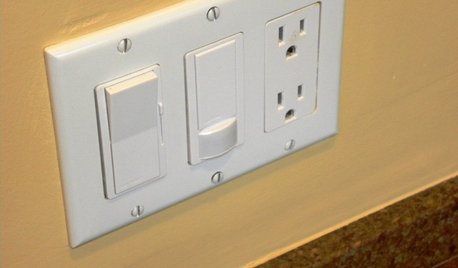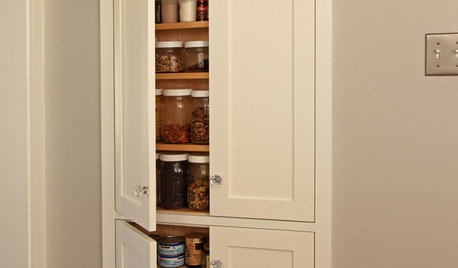Tapping power and wiring new single pole dimmer
spup345
14 years ago
Related Stories

GREAT HOME PROJECTSHow to Install a Dimmer Switch
New project for a new year: Take control of your lighting to set the right mood for entertaining, dining and work
Full Story
MORE ROOMSHome Tech: Getting Rid of Wires Without Sacrificing Sound
Wireless home technology still isn't perfect, but new products are giving audiophiles choices
Full Story
STORAGETap Into Stud Space for More Wall Storage
It’s recess time. Look to hidden wall space to build a nook that’s both practical and appealing to the eye
Full Story
LIFEHow to Prepare for and Live With a Power Outage
When electricity loss puts food, water and heat in jeopardy, don't be in the dark about how to stay as safe and comfortable as possible
Full Story
GREAT HOME PROJECTSPower to the People: Outlets Right Where You Want Them
No more crawling and craning. With outlets in furniture, drawers and cabinets, access to power has never been easier
Full Story
GREEN BUILDINGOff the Grid: Ready to Pull the Plug on City Power?
What to consider if you want to stop relying on public utilities — or just have a more energy-efficient home
Full Story
LIGHTINGGet Your Home's Recessed Lighting Right
Learn the formula for how much light a room needs plus how to space downlights, use dimmers and more
Full Story
KITCHEN SINKSJust a Touch: Faucets Without the Fuss
Faucets that turn on with a tap of the finger, forearm or hand are great for messy hands or full arms
Full Story
GREEN BUILDINGHouzz Tour: Going Completely Off the Grid in Nova Scotia
Powered by sunshine and built with salvaged materials, this Canadian home is an experiment for green building practices
Full Story
DECORATING GUIDESWhat We Can Learn From the Minimalists
Discover the power of simplicity and how to employ a less-is-more approach in your decorating scheme
Full Story








mike_kaiser_gw
spup345Original Author
Related Professionals
Galveston General Contractors · Kemp Mill General Contractors · Kilgore General Contractors · Palestine General Contractors · Plano General Contractors · Port Saint Lucie General Contractors · Post Falls General Contractors · Hillcrest Heights Handyman · Brockton Solar Energy Systems · Carson Solar Energy Systems · Downers Grove Solar Energy Systems · Pinellas Park Solar Energy Systems · Berkley Home Automation & Home Media · Fort Collins Home Automation & Home Media · New York City Home Automation & Home Mediamike_kaiser_gw
spup345Original Author
mike_kaiser_gw
joed
spup345Original Author